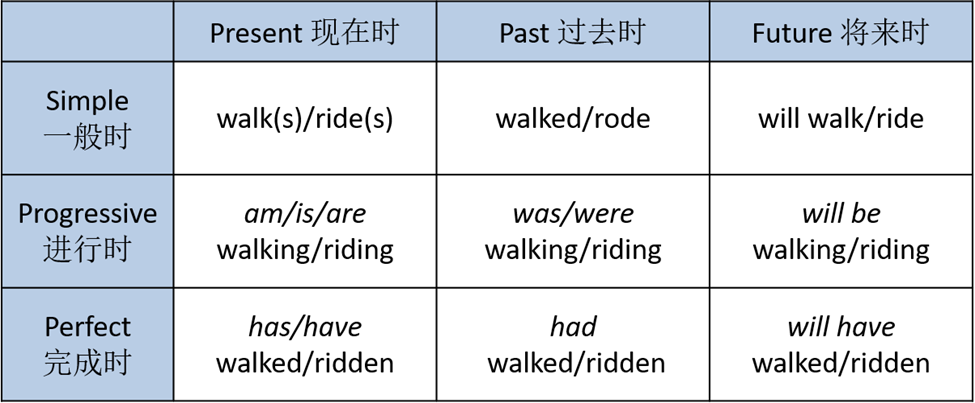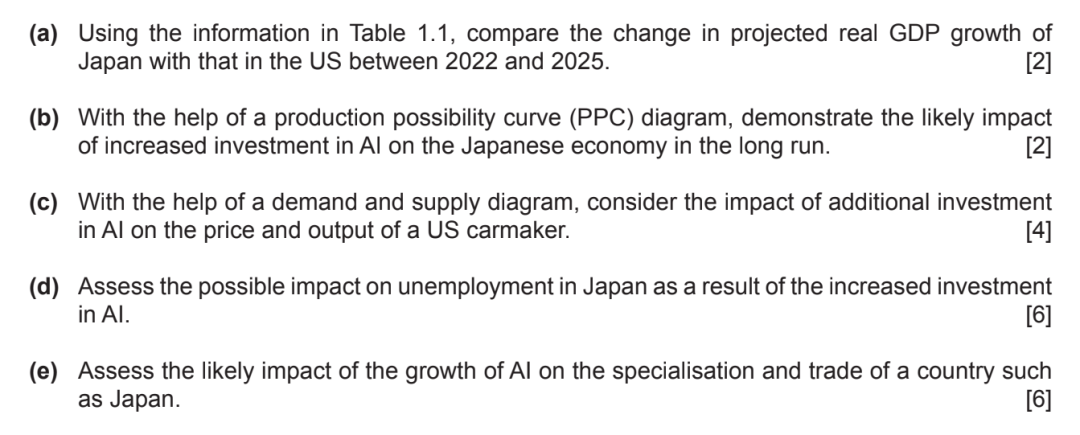上次我們(men) 談到了SAT經常考的一個(ge) 知識點,逗號的使用。我們(men) 今天繼續討論另一個(ge) 每次必考的知識點,時態的正確使用。英語中的時態種類有很多,下麵表格中列出了常見的9個(ge) 時態,把它們(men) 掌握了應對SAT基本就沒問題了。

這裏說的“掌握”並不隻是知道這9個(ge) 時態的含義(yi) ,而是要知道它們(men) 相對應的各種不同場合,什麽(me) 時候應該用哪種時態,它們(men) 各自之間的區別是什麽(me) 。譬如同學們(men) 在平時最容易混淆的兩(liang) 個(ge) 時態,一般過去時和現在完成時,它們(men) 都是講述過去發生的事情,有什麽(me) 區別?什麽(me) 時候用哪種?又或者現在完成時和過去完成時,它們(men) 也都是講述過去的事情,為(wei) 什麽(me) 一個(ge) 屬於(yu) 現在時一個(ge) 屬於(yu) 過去時?
除了搞清楚以上的一些時態基本區別,我們(men) 還需要明白它們(men) 是跟哪些短語搭配的,某些特定句式會(hui) 用哪一種時態,等等。以下麵這道SAT題為(wei) 例:
In his 1963 exhibition Exposition of Music—Electronic Television, Korean American artist Nam June Paik showed how television images could be manipulated to express an artist’s perspective. Today, Paik _______ considered the first video artist.
Which choice completes the text so that it conforms to the conventions of Standard English?
A) will be
B) had been
C) was
D) is
這題屬於(yu) 相對簡單的時態題,關(guan) 鍵詞是“Today”,這個(ge) 時間副詞告訴了我們(men) ,句子的時態隻能是現在時,可以排除掉A,B,C三個(ge) 選項,直接選D即可,為(wei) 其他題目節省寶貴的時間。同樣,我們(men) 從(cong) 句子含義(yi) 也可以看出,這是講述一個(ge) 所謂“普遍真理”的情況。在這種情況下,都是使用一般現在時,即使這個(ge) 事情是過去發生的。譬如,Last week in their science class, the students discovered that water’s boiling point is higher when under high pressure.
SAT的時態題還經常考察完成時態,包括現在完成時和過去完成時:
Based on genetic evidence, archaeologists have generally agreed that reindeer domestication began in the eleventh century CE. However, since uncovering fragments of a 2000-year-old reindeer training harness in northern Siberia, _______ may have begun much earlier.
Which choice completes the text so that it conforms to the conventions of Standard English?
A) researcher Robert Losey has argued that domestication
B) researcher Robert Losey's argument is that domestication
C) domestication, researcher Robert Losey has argued,
D) the argument researcher Robert Losey has made is that domestication
這題的關(guan) 鍵詞是“since”,它作為(wei) “自從(cong) …”含義(yi) 使用時,可以引導一個(ge) 時間從(cong) 句,也可以跟一個(ge) 時間名詞,但不管哪種,它都是跟主句中的完成時態搭配使用的,看到它就應該意識到,主句必須是完成時態。
除非它是作為(wei) “因為(wei) ”含義(yi) 使用,那就會(hui) 有其他情況。所以,B選項可以直接被排除。C選項和D選項裏好像有完成時態,但一個(ge) 是在插入語中,一個(ge) 是在定語從(cong) 句中,它們(men) 的主句都並不是完成時態,所以這也是不行的。A選項是主句中使用現在完成時,為(wei) 正確選項。
下麵這道題是考察until,unless,if等連詞引導的從(cong) 句中的時態。使用這些連詞的特定句式,我們(men) 一般把它們(men) 叫做conditional sentences,條件性句子。它們(men) 的從(cong) 句中用什麽(me) 時態,主句中用什麽(me) 時態,是根據句子的含義(yi) 有特殊規定的。
-
當講述的是科學真理,主句和從(cong) 句都要使用一般現在時。
-
當講述的是一般性常態事件,經常發生的,主句和從(cong) 句裏要使用同一種時態,可以都是一般現在時,也可以都是一般過去時。譬如,Whenever the coach asked for help, I volunteered.
-
當預測將來有可能發生的事情時,主句中要用一般將來時,從(cong) 句中用一般現在時:Unless we act now, we will lose the battle.
Atoms in a synchrotron, a type of circular particle accelerator, travel faster and faster until they _______ a desired energy level, at which point they are diverted to collide with a target, smashing the atoms.
Which choice completes the text so that it conforms to the conventions of Standard English?
A) will reach
B) reach
C) had reached
D) are reaching
這一題從(cong) 題幹內(nei) 容我們(men) 可以看到,是講述一般性科學真理,所以主句從(cong) 句都要使用一般現在時,選擇B。即使我們(men) 看不懂題目中的一些科學名詞,什麽(me) 是accelerator,什麽(me) 是atoms,我們(men) 也應該意識到主句中使用的是一般現在時態,那麽(me) 根據上麵的規定,從(cong) 句中肯定也應該使用一般現在時,隻能選B。
除了語法考點,同學們(men) 最頭痛的閱讀和寫(xie) 作部分,也是有一些常見考點知識點的,我們(men) 下次繼續跟大家討論一些這方麵的常見題型。














評論已經被關(guan) 閉。